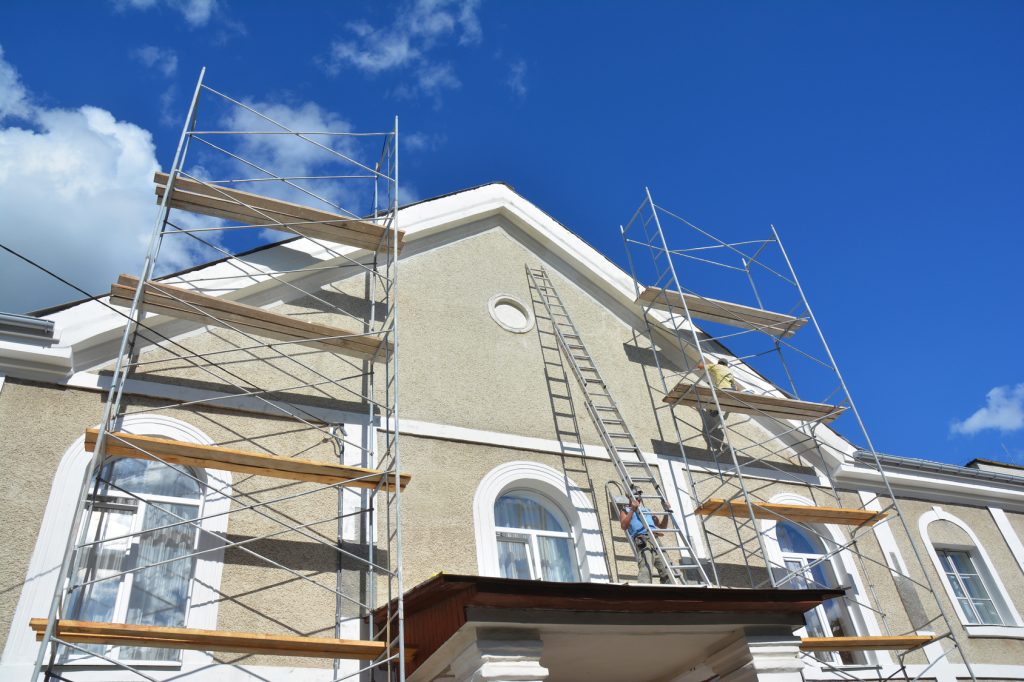5 Tips for Maintaining Your Stucco Exterior

It is a common sight to see a stucco exterior on homes these days. It was first used in the 1820’s as a way of replacing natural cement.
Today’s modern stucco can last up to 50 years. The trick to making it last this long is proper regular maintenance.
Follow these tips for stucco maintenance to keep the outside of your home looking great.
1. Regular Cleaning
Stucco is porous, it will absorb stains. Regular cleaning will prevent your home from looking dirty. It is best to clean stucco 2 to 3 times a year.
Garden Hose
A hose works best on smoother stucco textures. Start at the bottom of the wall and work your way up for the initial wetting of the wall. Then work your way down from the top during the cleaning process.
Pressure Washer
A pressure washer gives a more effective and deeper clean. You will need to find a washer capable of 1,500 to 2,800 psi.
Use a 40 degree angled nozzle. Stand far enough away from the wall to not damage the wall.
Stand with the nozzle 12″ – 24″ inches from the wall. If you decide to use a small nozzle at 25 degrees, stand further away from the wall.
2. Cleaning Agents
If you need a bit more cleaning power, use dish soap and water. Bleach and water is an option if your stucco has mold or mildew.
Be careful when using bleach to not kill the surrounding plants. Make the mixture 1 part bleach to 10 parts water.
3. Seal it Up
When stucco first goes on the exterior, a clear concrete masonry sealer gets applied. This prevents moisture from getting through the stucco and into your home. You should seal stucco every 5 years to continue moisture prevention.
Paint
If your stucco has paint, you need to take extra care of the paint. Look for bubbling and peeling of the paint.
Remove any loose paint during the cleaning process. Then seal up the major cracks.
Paint over the cleaned and prepped walls with paint. Paint stucco with a urethane and acrylic resin. This will provide strength and flexibility.
4. Sealing up the Cracks
For older homes, consider doing an elastomeric paint on your stucco. Older stucco tends to have hairline cracks.
These coatings work harder to keep moisture out. It can also seal up hairline fractures.
An elastomeric coating is flexible so it will continue to work even if the crack grows. You can get 10 years of use out of these types of sealers.
Bigger Cracks
If you discover a larger crack, you can apply a patch. First, remove any moisture that may be in the crack. Then apply the patch to seal up the area and prevent further damage.
5. Don’t Delay Repairs
As stucco ages, it can get cracks, holes, and chips. These imperfections are ugly and compromise the integrity.
Cracks in the stucco will continue to grow if not repaired. These cracks are the perfect places for mold and mildew to grow.
Stucco Exterior
Staying vigilant with stucco repair will ensure it lasts for years to come. Perform 2 to 3 inspections of the stucco exterior throughout the year.
Look for any cracks that need repair. Clean the stucco at least twice a year to clear it of dirt, stains, and mold.
If your stucco has paint on it, check for peeling or bubbling. Then repaint as needed.
If cracks develop you need to seal them up as soon as possible. Paint and coatings can seal smaller cracks. Larger cracks need a patch.
Schedule a quote for stucco painting today.
